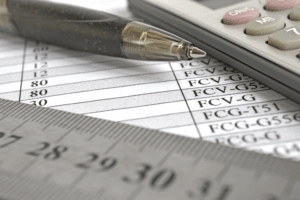
There may be situations where it is not possible to conduct a physical count to arrive at the ending inventory balance. If so, the gross profit method or the retail inventory method can be used to derive an approximate ending balance. When it comes to the end of a business’ accounting period, it is somewhat unlikely that the business has sold the entirety of its inventory. The term inventory accounting encompasses several inventory bookkeeping strategies.
How Does Inventory Accounting Work?

Consider a fashion retailer such as Zara, which operates on a seasonal schedule. Because of the fast fashion nature of turnover, Zara, like other fashion retailers is under pressure to sell inventory rapidly. Zara’s merchandise is an example of inventory in the finished product stage. On the other hand, the fabric and other production materials are considered a raw material form of inventory. Methods to value the inventory include last-in, first-out, first-in, first-out, and the weighted average method.

Recording Transactions for Goods Sold
- That’s because of the challenges it presents, including storage costs, spoilage costs, and the threat of obsolescence.
- Different methods can result in varying cost of goods sold figures, gross margins, and net income.
- Inventory accounting will then allow you to assign values to the items in each of these three stages of the process.
- Accounting for pipeline inventory, also called in-transit inventory, comes with unique complications due to the sometimes-unclear ownership of in-transit goods.
- Many businesses use Excel spreadsheets to keep track of their inventory and accounts.
- The four types of inventory management are just-in-time management (JIT), materials requirement planning (MRP), economic order quantity (EOQ) , and days sales of inventory (DSI).
The perpetual inventory system automatically keeps your inventory records up to date as stock movements occur, so your cost of goods sold (COGS) and https://www.bookstime.com/articles/fob-shipping-pointing will be more accurate throughout the year. That means keeping accurate and up-to-date financial records for business management purposes and tax return filing. Following International Financial Reporting Standards (IFRS), a business can determine the appropriate information as required, like corresponding inventory accounting numbers. Whereas inventory management tracks and controls the movement of inventory, the accounting side deals with the financial information intimately tied to the buying and selling of finished goods. When it comes to inventory accounting, you’ll learn everything you need to know in this guide to inventory accounting.
Raw materials
Retain an electronic copy of the physical inventory along with the completed physical inventory reconciliations, and keep these copies available for internal and/or external auditors. These characteristics can be applied inventory account to all businesses in all industries, so if you ever unsure what should be included or not just remember this inventory template. By hiring the right NetSuite accountant you get spot-on financial statements.
In fiscal 2022, P&G had materials and supplies (raw materials) of approximately $2.2 billion, work in process of $856 million, and finished goods of $3.9 billion. Finished goods inventory is inventory that has been completely built and is ready for immediate sale. Regardless of the inventory cost method mentioned above, finished goods inventory consists of the raw material cost, direct labor, and an allocation of overhead. The ending balance of inventory for a period depends on the volume of sales a company makes in each period. Because we’re using the FIFO method, our order includes the first crystals that were placed in stock, which were $4 each. The remaining crystals in the order were taken from the second group of crystals purchased, which were $6 each.
From more inventory to lower prices, here are 3 signs the housing market may be getting better for buyers
Inventory Carrying Cost Formula, Examples, Tips to Lower It – Investopedia
Inventory Carrying Cost Formula, Examples, Tips to Lower It.
Posted: Mon, 14 Aug 2023 07:00:00 GMT [source]
In accounting, inventory is classified as a current asset and will show up as such on the business’s balance sheet. From cost of sales inventory to periodic inventory, there are a variety of inventory accounting methods to choose from. However, for this guide, we’re sharing our inventory accounting process when working with sellers.
This approach reduces storage and insurance costs, as well as the cost of liquidating or discarding excess inventory. To effectively manage inventory, it is important to assign a value to each inventory item. The two most commonly used accounting methods for this purpose are FIFO and LIFO.
Implications of Inventory Accounting
They can integrate with other business systems, such as accounting and customer relationship management (CRM) software, to provide a holistic view of operations. Advanced platforms feature dashboards and reporting tools that give managers actionable insights into inventory performance, facilitating strategic decision-making. The significance of inventory for certain industries makes accounting and valuation a pertinent focus area. This is because changing inventory costing methodologies often requires systems and process changes.
Why Is Inventory Accounting Important?
However, according to Reffkin, 34% of homes on the market have seen a price drop in May. More inventory is finally trickling into the housing market, which could help push prices down. Prospective home buyers have been slammed by a shortage of inventory for the past few years, which has limited their number of options and raised prices.